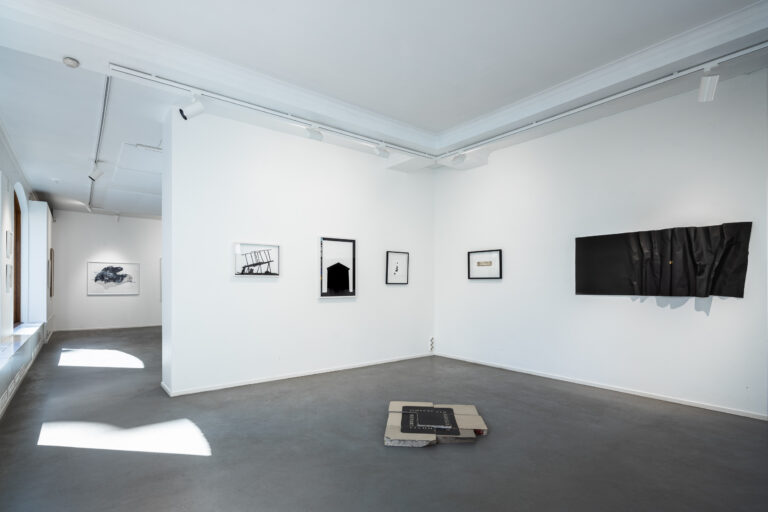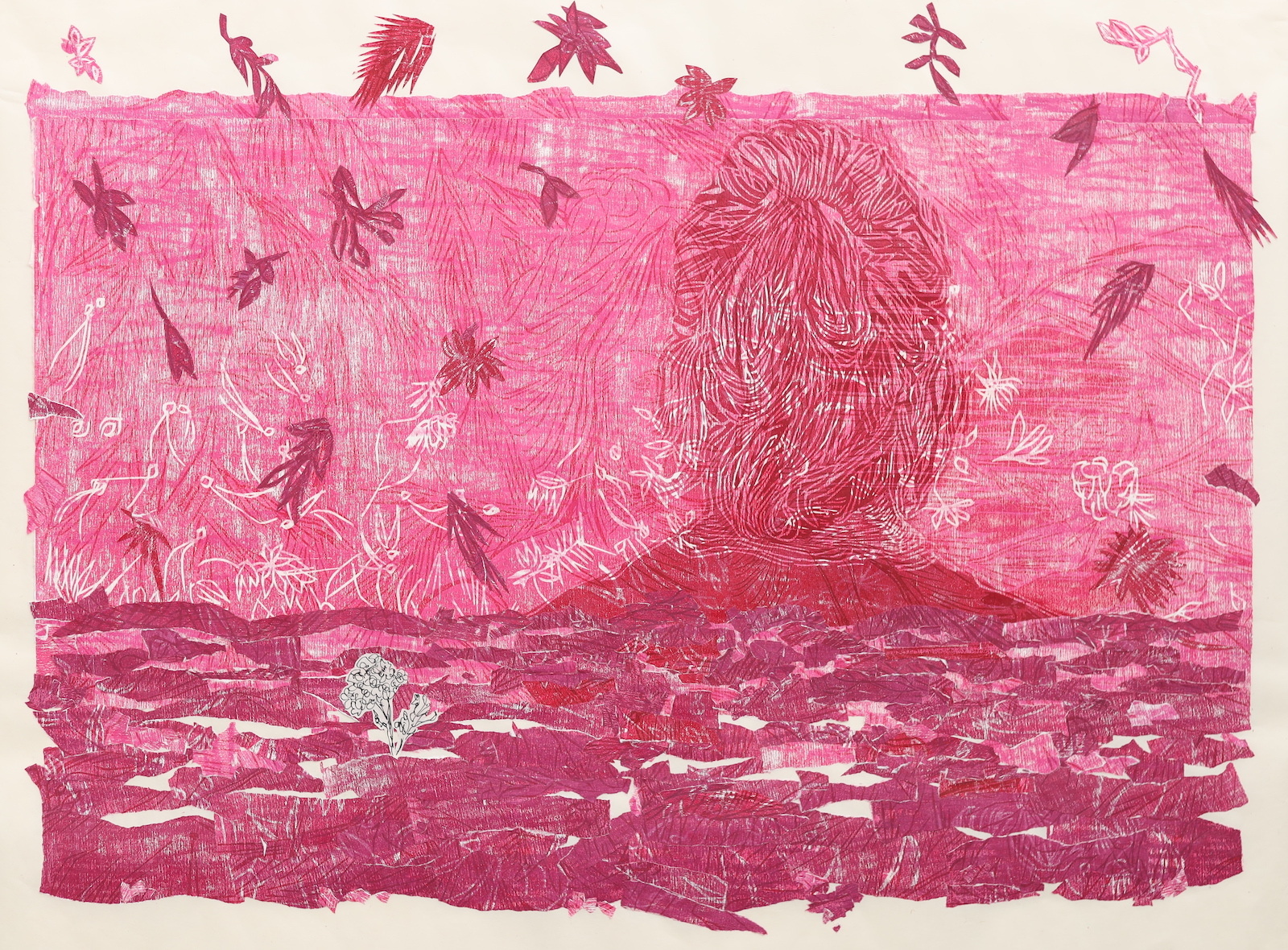About the exhibition
I pour the rotten smelling water out of the vase. The daffodils remain. I move the vase from table to table for a year and finally draw the dried plants, which have begun to resemble tissue paper. I pick up a rhubarb leaf and leave it on the table. I draw sunflowers in the garden in October, break the drawing into pieces and reassemble it. I draw the sofa, the blinds, the reddish beam of light, and the downturned figure of my child, drawn to the blue light of the tablet. I photograph my posture and transfer it to the woodcut. My thoughts and the order of my immediate surroundings fragment, but on paper something always settles.
The exhibition includes woodcuts, ink and pastel drawings and collages. The works include people in their domestic interiors and plant drawings where the human being is incorporated into the composition or disappears altogether. For a couple of years my gaze has wandered from the living room to the outside and back again. I am interested in the contradiction of the home as a place of rest, where one can be protected from the gaze, but where one can also become unwittingly trapped, alone. For women in particular, the home has also traditionally been the centre of social life, a place to be presented to others. Emotions are reflected in gestures, such as posture and the position of the shoulders. Drawing plants fascinates me as a parallel to the subtle gestures of the human body.Plants are also grateful to be observed, as they change every day but remain still when drawn.
I am fascinated by the self-portraits, portraits and home interiors of women from different eras, as everyday life repeats itself through the centuries, even if the vegetable garden has become a plant box and the book has been transformed into a telephone. I always identify with the artist at work when I see, say, an impressionist drawing of a garden. I am enchanted by the colours and the composition. I sit on a lawn chair, repeating and remembering what I have seen. I capture on paper bits and pieces of everyday life, the beauty of which otherwise threatens to go unnoticed.
Thanks to Taike for supporting my work.
Laura Ukkonen
Laura Ukkonen (b. 1977) is a Helsinki-based visual artist who draws and makes woodcuts, combines them with moving images and writes. Inspired by the self-portraits, home interiors and plants of women from different eras, she observes her everyday environment, as these are the subjects that women as artists have had access to throughout the centuries. What is femininity as defined by women themselves and what do their emotions tell us about women’s history?
Laura Ukkonen graduated from Aalto University as a visual artist (TaM, 2012) and visual arts educator (TaM, 2019). She has also studied fine arts at the Académie des Beaux-Arts in Paris (2010) and art history at the University of Turku (HuK). Ukkonen’s works are in the collections of the Helsinki and Jyväskylä Art Museums. His most recent solo exhibitions have been at Galleria Ratamo in Jyväskylä, Poriginal Gallery (2023) and Galleria Huuto in Helsinki (2022). Texts related to her artistic work have been published in, for example, in Taidejemmoja publication.
About the artist
VISIT THE EXHIBITION
Galleria G and Graphoteque
Pieni Roobertinkatu 10,
00120 Helsinki
Tue-Fri 12-17, Sat-Sun 12-16
